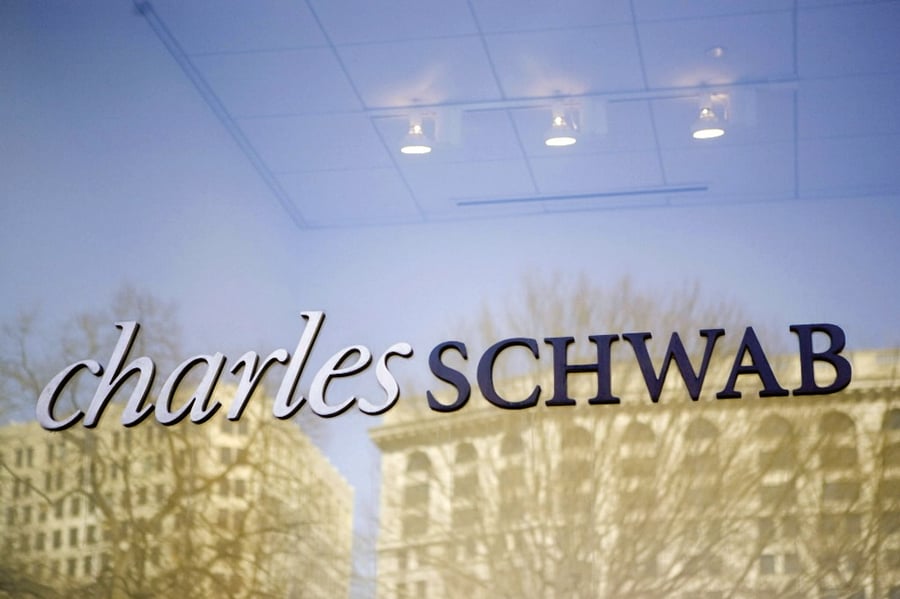

My friends John and Pat, both in their 60s, asked me what I thought of the new Schwab Intelligent Income program, which is a digital service that helps retirees manage their income.
Both are recently retired. John was a corporate lawyer and Pat was a teacher. John has IRA rollovers at three different firms and Pat has a 403(b). They have three taxable accounts between them. Together, they have seven accounts at four institutions worth $1.5 million, half of which is taxable and half in qualified accounts. Their primary objective is “income we won’t outlive.”
I told them the Schwab program is very well designed — if you own Schwab exchange-traded funds or come in with all cash. I explained they would have to sell their taxable holdings — and pay taxes on those realized gains — to get the benefit from the program, since Schwab Intelligent Income only works with Schwab Intelligent Portfolios, the company's managed account robo-solution.
So we did a back-of-the-envelope calculation to see what would happen if they moved all their assets to Schwab Intelligent Portfolios. We determined their tax bill would be roughly $75,000 to consolidate to the Schwab program. Their reaction: “That doesn’t make sense.”
As we’ve learned through our engagement with industry leaders through the InvestmentNews Future of Financial Advice programs, household-level management is being addressed by at least 30 firms. Each is working on coordinating with a variety of fintech partners to create robust ecosystems — we call it smart-household management — that improve investor outcomes. As Schwab and others are finding, the complexity increases exponentially when moving from individual account management to coordinated household-level management.
Why are firms creating smart-household portfolio management ecosystems? To gain a competitive advantage by improving both investor and adviser outcomes. Improving investor outcomes can only be achieved in three ways: 1) reducing investment costs; 2) managing risk consistent with the investor’s comfort level; and 3) reducing taxes.
The cost issue is being addressed across the industry. And as costs continue to fall, the new focus is on managing risk and taxes to improve outcomes. The only way to meaningfully do this is to manage all household assets in a coordinated and optimized fashion.
According to Morningstar, investor outcomes can be improved by 183 basis points a year when managed in a comprehensive way. Ernst & Young found outcomes can be improved by 33% over an investor’s lifetime when managed in a smart-household way.
The industry’s immediate challenge is learning how to organize and coordinate individual client data from various sources so it’s consistent, and during the accumulation phase, optimizing the multiple accounts in investors’ household portfolios to minimize taxes through tax-smart asset location and risk management consistent with the investors’ objectives.
When it comes to withdrawals, asset location and risk management need to be maintained while withdrawals are made over time. Software exists not only to provide the investor and the adviser with the guidance they need — trade by trade — but also to quantify the benefit in dollars and cents, from accumulation through withdrawal. The result is a win-win-win: Investors, advisers and firms all benefit when financial outcomes are improved.
Schwab’s Intelligent Income is an important industry advance. Maximizing income across multiple taxable and tax-qualified accounts is a good thing, and Schwab is making a positive step toward smart householding — but only if you are invested in Schwab’s Intelligent Portfolios, which, my friends discovered, wouldn’t be cheap.
[Recommended video: 2020 adviser outlook: Focus on managing client expectations]
Operationalizing household-level portfolio management to improve investor outcomes is the key trend we see for our industry over the next few years. Virtually all investors have multiple accounts, products, advisers and custodians, with little to no coordination or optimization of their holdings to maximize returns and income at the household level.
Wealth managers and fintech providers are collaborating to create ecosystems that provide guidance for advisers and clients on how to improve outcomes trade by trade and, most importantly, how to quantify the benefit of those improvements in dollars and cents. This not only demonstrates to investors the benefits of coordination but also demonstrates the value of the adviser.
The best solution will be the one that benefits the most investors and the products they currently own. Be on the lookout in the coming months for many more firms to offer income solutions that work with existing holdings and don’t require investors to sell assets at a large cost to get an important benefit.
Jack Sharry is co-chair of InvestmentNews Future of Advice programs and executive vice president of LifeYield, which offers a suite of asset-optimizing software solutions that caters to the financial advisory industry.

The move to charge data aggregators fees totaling hundreds of millions of dollars threatens to upend business models across the industry.

The latest snapshot report reveals large firms overwhelmingly account for branches and registrants as trend of net exits from FINRA continues.

Siding with the primary contact in a marriage might make sense at first, but having both parties' interests at heart could open a better way forward.

With more than $13 billion in assets, American Portfolios Advisors closed last October.

Robert D. Kendall brings decades of experience, including roles at DWS Americas and a former investment unit within Morgan Stanley, as he steps into a global leadership position.
Orion's Tom Wilson on delivering coordinated, high-touch service in a world where returns alone no longer set you apart.
Barely a decade old, registered index-linked annuities have quickly surged in popularity, thanks to their unique blend of protection and growth potential—an appealing option for investors looking to chart a steadier course through today's choppy market waters, says Myles Lambert, Brighthouse Financial.
